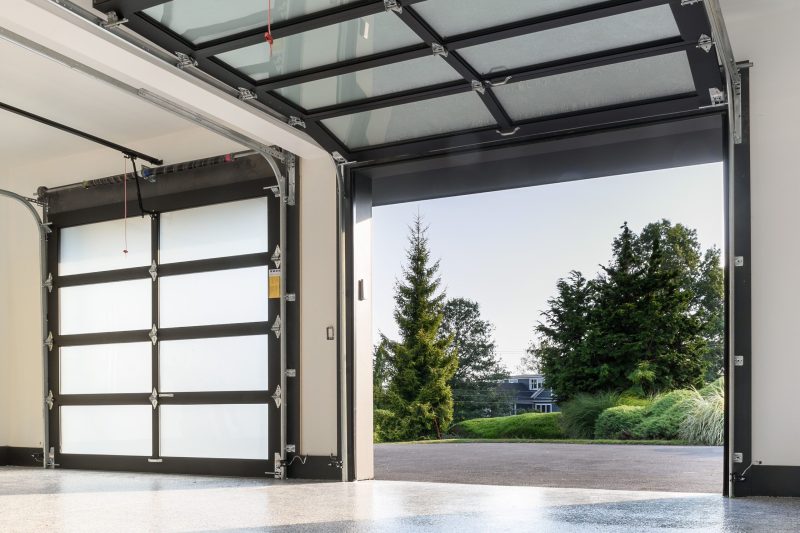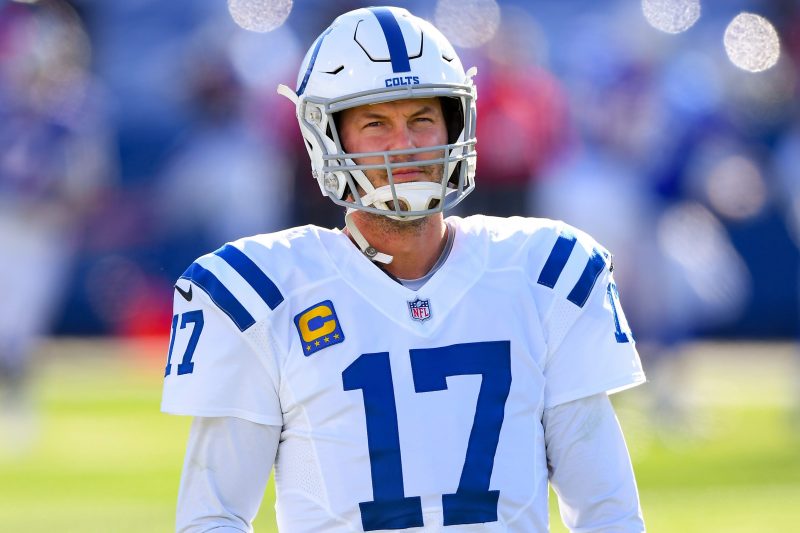How to Build DIY Garage Shelves


Sturdy DIY garage shelves are an unbeatable solution for maximizing storage space. They’re cost-effective, easy to build, and utilize vertical wall space efficiently. As a customizable project, these shelves adapt to your specific needs, keeping tools, equipment, and other items neatly organized off the floor.
We will walk you through the entire process of creating DIY garage shelves, from initial design to final installation. We’ll also share maintenance tips to ensure your shelves remain functional and safe.
How to Build DIY Garage Shelves
The following guide is totally customizable, but we’ll focus on building one shelving unit with 48-inch wide by 16-inch deep shelves. Feel free to adjust those measurements as needed, but recognize that you’ll need more (or less) materials. Also, do your best to design your custom shelf to be as efficient with those materials as possible.
Planning Your Garage Shelf Design
Planning your shelf design will help you maximize efficiency and ensure your shelves meet your storage needs. Consider factors such as the available space in your garage and the items you plan to store.
Determine Shelf Size and Capacity
When planning your shelf size, consider the dimensions of the items you’ll be storing. For most garage storage needs, 48-inch wide by 16-inch deep shelves work well. This size can accommodate large plastic totes, tool boxes, and other common garage items. As for capacity, properly constructed DIY shelves can hold significant weight. Plan for about 18 inches of vertical space between each shelf for taller items and easy access.
Choose the Right Location
Select a location for your shelves that maximizes unused wall space without interfering with your garage’s functionality. Avoid areas near doors or windows, and make sure there is enough clearance for your vehicles. Choose a spot near electrical outlets if you plan to store items that may need power. Before finalizing your shelf location, remember to check for any obstacles like pipes or electrical boxes.
Tools and Materials for DIY Garage Shelves
Below are the necessary tools, materials, and supplies for your garage shelf project.
-
Safety glasses
-
Hearing protection
-
Tape measure
-
Speed square
-
Miter saw (optional)
-
Circular saw
-
Power drill
-
Drill bits
-
Chalk Line or T-Square
-
Clamp (optional)
Lumber and Hardware
The lumber and hardware you choose will be the backbone of your DIY garage shelves. Remember, our plans are for a 48-inch shelf, but you can adapt the materials list for larger or smaller shelves.
- (11) 2×4 boards, 96 inches long
- (1) 4x8x1/2 sheet of plywood
- 2 1/2-inch and 1 1/4-inch wood screws
Preparing Your Workspace and Materials for Garage Shelves
Here are a few steps to complete before starting your shelf installation. These steps will help keep your project organized, safe, and efficient.
Set Up a Safe Work Area
Choose a flat, spacious area like your driveway or garage floor for this project. Ensure you have good lighting and ventilation. Clear the area of any obstacles or tripping hazards. Keep your tools and materials organized, with frequently used items within easy reach.
Remember to wear your safety gear throughout the project.
Cut and Organize the Lumber
Begin by cutting your lumber to the required lengths. For the legs, cut four 2x4s to 72 inches each. For the shelf frames, cut eight 48-inch pieces and twelve 13-inch pieces from the 2x4s. Cut your plywood sheet into four 48-inch by 16-inch boards for the shelf surfaces. Organize these cut pieces into groups based on their purpose (legs, frames, shelves) to streamline the assembly process.
Step-by-Step Construction Process for Garage Shelves
We have provided the instructions for building your new DIY garage shelves below.
Step 1: Pre-Drill the Boards
Pre-drill the 48-inch boards, drilling two holes in the face of the board, three-fourths of an inch from each edge. Also, drill two holes in each of these boards at 24 inches (center).
Step 2: Assemble the Frames
Separate the boards into four piles of two 48-inch boards and three 13-inch boards, with the shorter boards stretching between the longer boards at the pre-drilled locations.
Working with one frame at a time, apply a bit of glue or construction adhesive to the edge of each short board and place them between the 48-inch boards to form the frame. Use the 2 1/2-inch wood screws to attach the shorter boards to the longer boards, taking care to keep the frame as square as possible during assembly. Repeat with the other three frames.
Step 3: Attach the Plywood to the Frames
Apply wood glue or construction adhesive to the top edges of the shelf frames and place the plywood on top. Taking care to ensure that the frames are square, align the plywood as best as possible. Pre-drill around the perimeter of the plywood and attach it to the frame with 1 one-fourth-inch wood screws.
Repeat for the other three shelves.
Note: It’s more important that the frames be square than the plywood. As long as the plywood isn’t overhanging the frame, it will work. If the plywood does overhang the frame, assemble the shelf and carefully trim the plywood with the circular saw.
Step 4: Mark the Legs
Place all four of the 72-inch legs side by side, this time on their flat (the wider dimension). Ensuring that their ends are even, mark one board at 2 inches, 24 inches, 46 inches, and 68 inches. Use the speed square to transfer these marks across all four boards.
These marks represent where the bottom of each shelf frame should sit to provide 18 inches of space between each shelf. It will also provide a slight toe kick, allowing you to get a little closer when lifting heavy objects.
Step 5: Attach the Shelves to the Legs
Lay two of the legs approximately 13 inches apart on the floor with the shelf location marks facing up. Starting at the top, apply glue or adhesive above the mark and place a completed shelf frame on top. Align the bottom of the frame with the marks before pre-drilling from the inside of the shelf and drive two 2 1/2-inch wood screws into each leg. Repeat the process with the other three shelves, being careful to align the bottom of each shelf with the lines.
With the four shelves attached to two of the legs, leave the unit on its side and lay the two remaining legs on top, marked sides up. Working with one leg at a time, apply a bit of adhesive or glue above each line before flipping the leg over and laying it in place. Align the bottom of the frame with the marks before pre-drilling and driving 2 1/2-inch screws through the inside of the frame and into the legs (this is where squeeze clamps can come in handy, though they’re optional). Repeat the process with the other leg.
Step 6: Stand and Brace the Shelf
With help, stand the shelf upright. It might feel slightly wobbly, but you’ll fix that in this step. First, pre-drill from the outside of the legs and drive two screws through the face of the legs and into the longboards at the front and back of each shelf frame.
Next, cut six right triangles from the remaining plywood, with the square sides measuring approximately 8 inches long. These triangles will form gussets that prevent the shelf from racking or wobbling. Using the 1 1/4-inch wood screws, attach the gussets to the back of the shelving unit, one at each shelf corner. Each gusset should lay flush against the back of the frame and the legs.
Step 7: Sand and Paint the Shelves (Optional)
To give your shelves a polished look, sand all surfaces to smooth out any rough spots or splinters. Start with coarse-grit sandpaper and finish with fine-grit for a smooth surface. Wipe down the shelves to remove all dust. Apply a primer suitable for wood surfaces. Once the primer is dry, paint the shelves with a color that complements your garage. We recommend using a semi-gloss or gloss finish for easy cleaning.
Step 8: Adding Trim or Edging (Optional)
Add trim to give your DIY shelves a more professional appearance and protect the plywood edges from wear and tear. Cut trim pieces to fit the front edges of your shelves. Attach the trim using wood glue and finish the nails. Fill any nail holes with wood filler and sand smooth once dry. Paint the trim to match or complement the rest of the shelving unit.
Maximize Your New Garage Storage
Proper organization can help you maintain a clutter-free garage and easily locate items when needed. Here are some tips for organizing your new garage shelves.
Organizing Items on Your Shelves
To efficiently use your new shelves, consider the following:
- Consider adding adjustable shelf brackets to some sections for flexibility in storing items of various heights.
- Group similar items together (e.g., gardening tools, automotive supplies, seasonal decorations).
- Leave space for future storage needs or more oversized items that may not fit in bins.
- Place heavier items on lower shelves for stability and ease of access.
- Use clear plastic bins for smaller items to keep them visible and protected from dust.
Label and Categorize Your Items
Use labels to maintain an organized garage:
- Create a labeling system that works for you (e.g., color-coded, numbered, or categorized).
- Create an inventory list of what’s stored on each shelf for quick reference.
- Regularly review and update your organization system to ensure it continues to meet your needs.
- Use a label maker or large, clear, handwritten labels on bins and shelves.
Safety Considerations for DIY Garage Shelves
Follow these safety recommendations to keep your shelves stable and secure for years to come.
Consider Proper Weight Distribution
To prevent overloading and potential collapse:
- Avoid exceeding the weight capacity of your shelves, which will depend on the materials and construction method used.
- Distribute weight evenly across each shelf.
- Periodically check the shelves for any signs of sagging or stress.
- Place heavier items on lower shelves to lower the center of gravity.
Anchor Shelves to Wall Studs
Use these steps to anchor your shelves:
- Locate the wall studs behind your shelving unit using a stud finder.
- Measure and mark stud locations carefully before drilling.
- Attach L-brackets to the top of the vertical supports and into the wall studs.
- Ensure the shelf is level before securing it.
Use suitable anchors and screws for your wall type. For heavier loads, consider using multiple brackets or a cleat system for extra support. Periodically check and tighten these anchors to ensure they remain secure.
Common Mistakes To Avoid When Building Shelves
When building DIY garage shelves, be aware of these common pitfalls:
- Skipping the planning phase: Proper planning prevents poor performance and wasted materials.
- Underestimating material needs: Always buy a little extra to account for mistakes or miscalculations.
- Using inadequate fasteners: Invest in quality screws and hardware for long-lasting stability.
- Neglecting to level the shelves: Uneven shelves can lead to instability and potential collapse.
- Overloading the shelves: Respect the weight limits of your DIY shelves to ensure safety.
Our Conclusion
DIY garage shelves offer a cost-effective way to boost your garage’s storage capacity and organization. By building custom shelving, you can tailor the design to your specific needs while saving money compared to pre-made options. Prioritize safety throughout the construction process and during use. Ensure proper weight distribution and perform regular maintenance to extend the life of your shelves.







